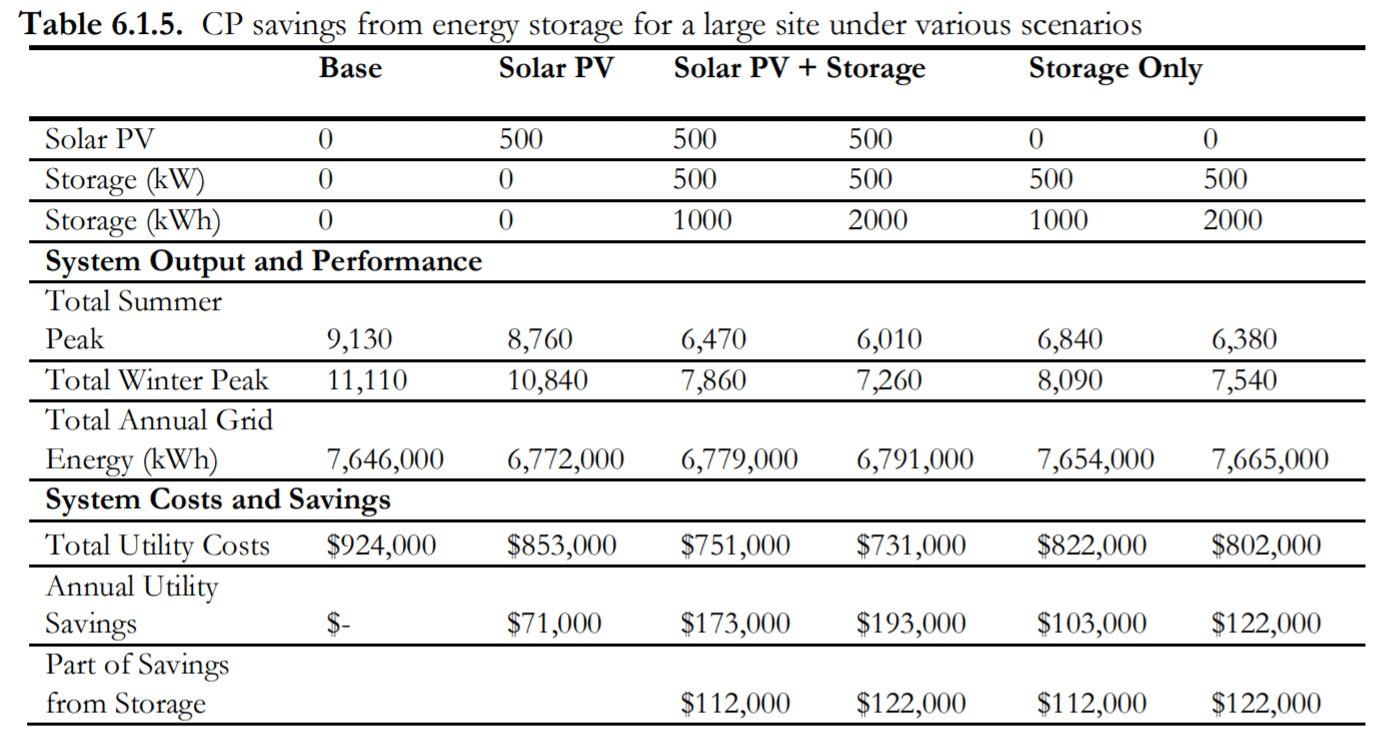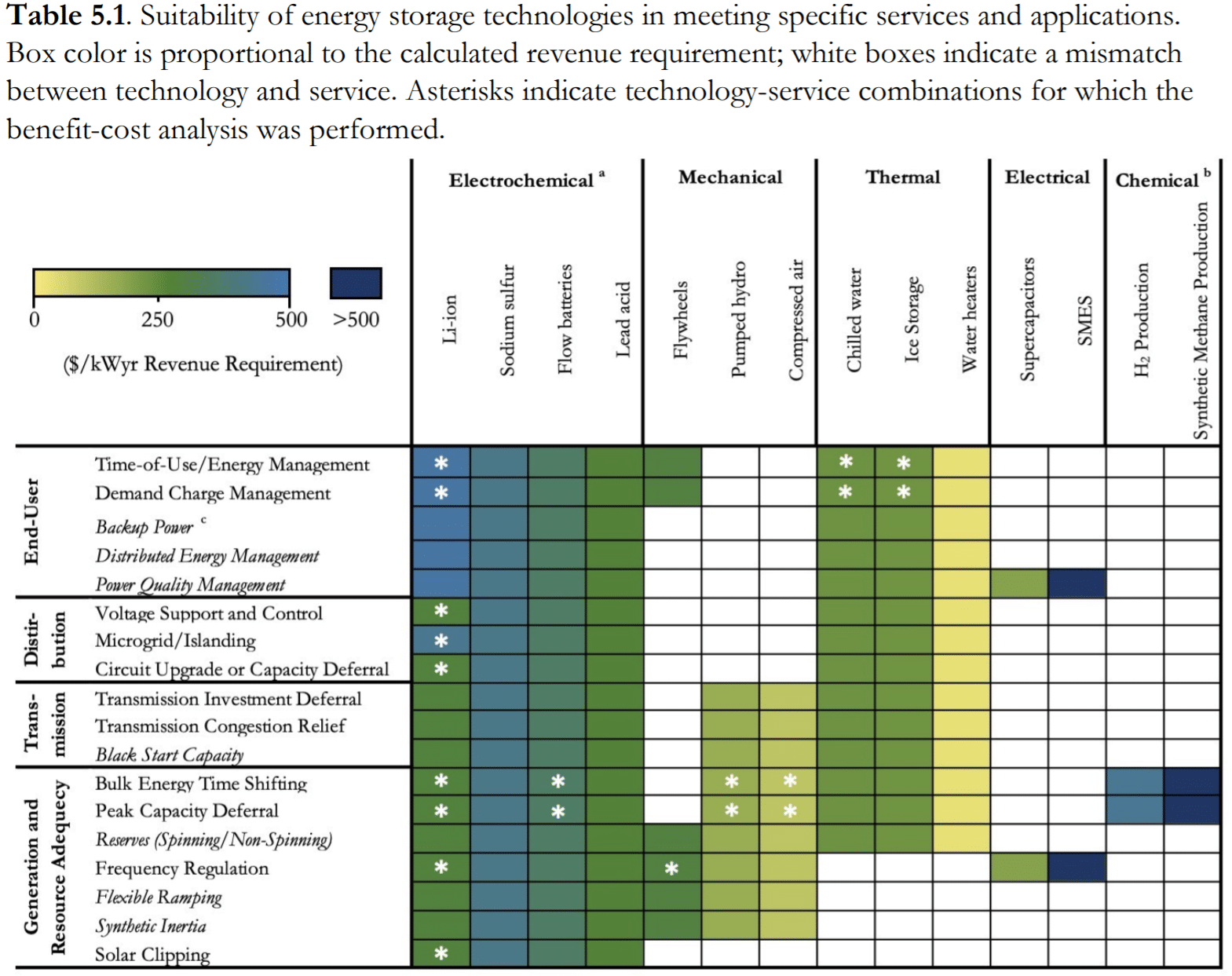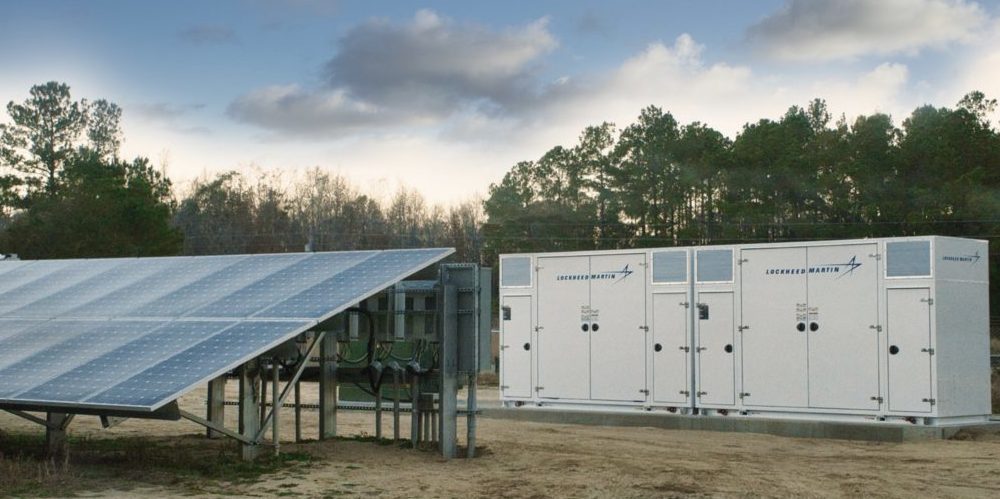The North Carolina Utilities Commission heard from the North Carolina Sustainable Energy Association and Tyler Norris of Cypress Creek about the avoided costs that could be saved by installing energy storage at an already existing utility scale solar power plant (pdf) on July 3.
While points of the presentation hinted at the political nature, the meat of the talk was a proposal put together by the North Carolina State University (NCSU) in their Storage Study (Exhibit 1, page 33 to the above document). The document sees a path for 5 GW of lithium ion battery storage for bulk energy time-shifting and peak capacity deferral by 2030. If solar volumes increase faster, or prices decrease faster – this value increases and moves forward in time. And if you’ve got the time, it goes far beyond what gets covered in this article.
In one model from the presentation, electricity savings were shown from various configurations of solar, solar+storage and storage alone relative to “coincident peak” (CP) pricing. The 500 kWac + 500 kW / 2 MWh of energy storage showed the greatest savings for the utility at $193,000/year.

The report showed other system sizes, and other electricity pricing models as well.
In a separate use case, Norris pointed out a very compelling solar plus storage system sizing:
In a hypothetical example modeled in the NCSU Storage Study, a 3 MW/3 MWh DC-coupled battery added to a solar facility with an AC rating of 7.1 MW and a 1.4 ILR reduced solar clipping by at least 80% and significantly increased the share of time the facility generated maximum AC output, from 29% of the time without storage to 47% with storage.
The solar power plant was a 100% dispatchable resource for almost 12 hours with the above configuration.
In response to the opening question of whether or not energy storage could “enhance the value of existing generators in North Carolina”, Norris observed that the state has benefited from hundreds of millions in grid upgrades paid for by developers who have spent on the order of $10 billion installing of 5.4 GWdc of solar projects. He also noted that by adding energy storage to this resource the following benefits could be gained:
- Bulk energy time shifting
- Peak capacity deferral
- Solar clipping
- Flexible ramping
- Frequency regulation
- Voltage support and control
- Circuit upgrade or capacity deferral
- Transmission investment deferral
- Transmission congestion relief
Electric Utility Challenges
Politics and electric utility push back was part of the discussion as well. Norris emphasized that the state’s regulated utilities don’t assign an economic value to most of these services. He argued that even while Duke Energy expresses concerns about the non-dispatchability of solar power generation facilities, legislatively:
Duke Energy is proposing unjust and unreasonable barriers to market entry for energy storage resources particularly with respect to power purchase terms and conditions and interconnection standards – that will wholly obstruct the addition of such resources to the vast majority of installed renewable generating facilities in North Carolina.
When speaking of other structural challenges to upgrading the 5.4 GW of solar in North Carolina, it was stated that as part of standard process, “Duke Energy seeks to terminate the power purchase agreement (PPA) of any contracted qualifying facility if it attempts to add storage equipment, regardless of how the QF intends to utilize such equipment to enhance the value of the generator to the ratepayers.” Duke then pushes a 5 year PPA on the projects.
This occurs even though section 1.5.2 of the North Carolina Interconnection Procedures allows for a variety of changes without triggering material modification, including changes or replacements of generators, inverters, solar panels, transformers, and relaying controls, and changes to the DC/AC ratio of a solar facility that does not increase the AC output capability.
And to give you a nice chart to chew on, here’s a comparison of energy storage technologies and the revenue that the technology must get to be financially viable:

Edit: 7/13/19 – 1.38 PM – corrected Norris’ description of solar spending on the grid in the state
This content is protected by copyright and may not be reused. If you want to cooperate with us and would like to reuse some of our content, please contact: editors@pv-magazine.com.








Of the nine mentioned auxiliary services mentioned in the article, the utility wants these to be “their” avoided costs, not cost reductions sent along to the ratepayers. Just as when your neighbor installs a grid tied solar PV system on his home. During the day his extra generated power goes right into your meter and is used at the ‘retail’ rate. Since most electric utilities tack a “fuel” charge to each kWh of electricity you pay for, you’re getting punked for fuel charges on solar PV from your neighbor. When the utility doesn’t have to pay for the generation system, buy property to install the system on, pay for installation, maintenance, repair or insure the system, these utility “avoided” costs are not passed along to you the non-solar ratepayer. The neighbor’s solar PV generated power is a more efficient source than the long trek from the generation station stepped up and stepped down power losses to your home. Gives the utility more power to sell locally without the power loss of their own grid system.
Thank you, Solarman. That’s a great explanation. Esp. the “you’re getting punked for fuel charges” part. haha. So true.